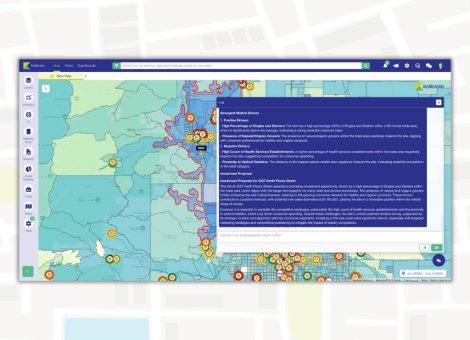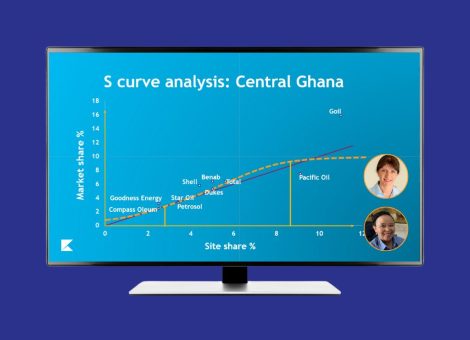What is optimization, anyway?
To be successful at a task, you must take actions that make the best or most effective use of the resources or situation available to you. To maximize the return on those actions you need to understand the impact that each action will have and choose the one’s that provide the most benefit. This ‘continuous improvement’ process is referred to as “optimization.” But optimization is not just a process. It’s also a mathematical concept, and one with roots that are centuries old. It exists within mechanics, finance, engineering, geophysics, media, marketing…the list goes on.
Until recently, though, optimization as a mathematical effort was not a familiar proposition for most businesses. Over the last couple of decades there has been a mindset shift, occurring alongside a shift (truly, an explosion) in computing capability. In the past, the application of “optimization” was rarely understood. Today, the application of optimization is known to be an opportunity to improve performance via understanding the realities of your business.
So, what is optimization, really? In short, it is finding the highest achievable performance under a given set of constraints to gain the highest level of retail success.
Why leverage fuel price optimization?
Why would you want to leverage optimization? Assuming you make well-informed decisions as a result of optimization, it allows you to achieve stronger performance. Within retail fuels, adjusting your performance based on constraints is an ideal way to address your ability to compete in any market stage. In a less mature market, it may appear that stability precludes a need for optimization. But as complexity increases, adapting to the market and incorporating new data will become increasingly important to your success.
As markets move through phases of regulation, the constraints and considerations that form your fuel pricing or location/retail network planning strategy will change and increase in complexity. Because constraints evolve, flexibility is a critical component of any optimization model.
How can you use optimization in fuel pricing?
Constraints are the lifeblood of pricing, even at its simplest. You must know at least one parameter by which you want to judge what price should be. In the past, the function has been especially simple: If my competitor’s price is X, mine should be Y cents higher or lower than that; or I want a price that is going to give me minimum margin of Z. Today, in a complex world that features access to automation and machine learning, your competitor’s price and/or your minimum margin no longer need to be the only constraints.
A typical retail fuel prices optimization goal may be to set prices that will maximize profitability, for a given volume target, within defined price positioning parameters. Those parameters may be abundant and complex. And that’s a positive thing, if you employ the right model by which to interpret them and produce results. In the past, you may have decided your constraint was a certain price range, or the constraint may have been your goal itself, e.g., pricing in order to hit a certain margin. But today, the constraints can range in type and priority. You may still want to include competitor price and a margin goal, but also time of day, traffic flow, max change in price, psychological price barriers, etc. The value of each of these, in terms of their prioritization with the optimization model, is relative to your strategy. Bear in mind that constraints are not always the boss of your decisions. Sometimes, you need to make concessions about what is acceptable for your business, as meeting every single constraint is not the goal — it’s maximizing within those that matter the most.
How can you use optimization in location planning?
In location planning, decisions focus on capital spend. Should you buy new sites? Close some sites? Refurbish 20 sites? Which 20? If you refurbish, what should you change? You no longer need to make these difficult investment decisions without a deeper understanding of the realities of your market. Instead, you can leverage optimization.
Optimization, in network planning, is maximizing ROI for a given capital spend within defined tactical parameters. In order to project your decisions and possible return, you must first create said parameters.
With the right network planning tool, these parameters can be implemented as scenarios, such that you can effectively see what will happen to your volume if you add 10 pumps and a QSR vs. if you added just six pumps and no QSR. How might you perform if you added a particular service like a car wash? Given a particular investment amount and particular constraints and priorities, the most sophisticated planning tools intelligently allocate spend across multiple areas to project the returns, thereby maximizing ROI.
Of course, none of this is possible without the technology to execute the model. That’s how optimization came into the mainstream: it became much easier with an explosion of machine learning, and the mindset followed.
What makes a good optimization model?
Regardless of how capable a tool may be, optimization is only as good as the data and parameters you feed it. Best practice users would have all the important and feasible parameters defined within the optimization process. To go one step further, these parameters would be defined hierarchically, and the optimization would be intelligent enough to relax certain lower-level constraints that would promote a higher performance overall.
The core of a great optimization effort is a predictive model that uses the latest machine learning capabilities to project outcomes. Additionally, the automation involved in all of this must be sound; imagine trying to evaluate hundreds of constraints that vary in priority across hundreds of sites without it.
Finally, optimization must be incorporated into your process. Continuous information updates will help keep your outcomes accurate, and your strategy will form your constraints, as well as reshape them.
Optimization isn’t one-size-fits all
Importantly, it is not possible to create one set of parameters that would allow all retailers to optimize the same. Optimization is individual; it’s maximizing profitability within your particular set of constraints. The first step toward optimization is defining those constraints. The next step? Getting them into a system. Contact Kalibrate today to get started.
Read more articles about:
Fuel pricingSubscribe and get the latest updates
You may unsubscribe from our mailing list at any time. To understand how and why we process your data, please see our Privacy & Cookies Policy
Related posts
Location intelligence
AI in location intelligence: See it in action
See videos and screen captures of how AI has been integrated into the KLI platform.

Fuel pricing
Fuel pricing by exception: When do analysts actually analyze?
Managing fuel prices can be time-consuming, especially when analysts spend much of their day on routine tasks....


